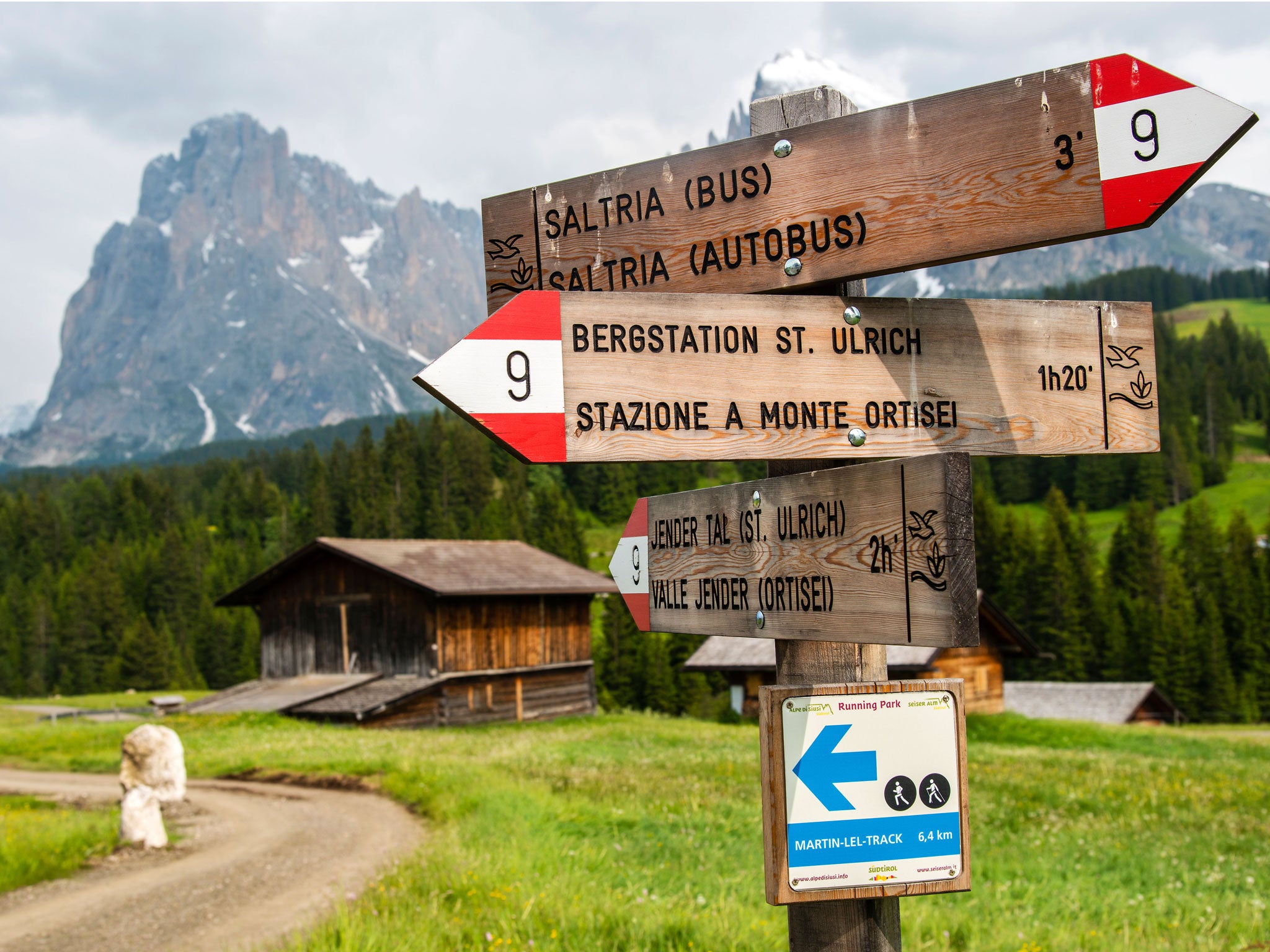When in Rome, do as the Romans do... but place names are turning German in South Tyrol
Teutonic governor in Italy’s northern province to change signage to German only

Your support helps us to tell the story
From reproductive rights to climate change to Big Tech, The Independent is on the ground when the story is developing. Whether it's investigating the financials of Elon Musk's pro-Trump PAC or producing our latest documentary, 'The A Word', which shines a light on the American women fighting for reproductive rights, we know how important it is to parse out the facts from the messaging.
At such a critical moment in US history, we need reporters on the ground. Your donation allows us to keep sending journalists to speak to both sides of the story.
The Independent is trusted by Americans across the entire political spectrum. And unlike many other quality news outlets, we choose not to lock Americans out of our reporting and analysis with paywalls. We believe quality journalism should be available to everyone, paid for by those who can afford it.
Your support makes all the difference.As the battle between Rome and Berlin continues over European austerity, in Italy’s northernmost province a linguistic conflict, provoking almost as much ire, is escalating between German and Italian-speaking locals.
In the Alpine South Tyrol, known in Italy as Alto Adige, the Teutonic governor Luis Durnwalder is taking an axe to the Italian names of 135 of the area’s leading beauty spots.
Signs, maps and tourist information will henceforth list celebrated peaks and vantage points such as the Monte Sant’Anna, the Forcella del Santo and the Forcella di Vallunga in German only.
Local Italian-speaking politicians from the left and right have criticised the widespread replacement of Italian titles with German ones.
Daniela Rossi, the deputy secretary of the local branch of the centre-left Democratic Party, said: “We look like a laughing stock. This business was never discussed with us.”
Enrico Lillo of the centre-right People of Freedom party said: “It’s the usual case of the SVP [the German speaking South Tyrolean People’s Party] trampling over the Italian-speakers.”
But La Repubblica reported that hardliners in Mr Durnwalder’s regionalist SVP think the cull of Italian place names hasn’t gone far enough, and dozens more have been put up for Germanification. So far this hasn’t happened, possibly because Mr Durnwalder knows it might provoke the government in Rome to tear up the deal on the agreed 135 name changes.
A look at the history books shows the complexity of the situation. At the beginning of the 20th century the Italian nationalist politician Ettore Tolomei was charged with translating the German place names in South Tyrol – all 16,735 of them – into Italian.
With German and Italian side by side on most signs and guidebooks, Alto Adige became the place of the double name, with people pointedly using only the version from their own language.
Then, three years ago, Mr Durnwalder secured an agreement with the then minister for the regions, Raffaele Fitto, allowing him to identify and start disposing of the Italian names that he said were never used.
Critics of the plan to axe them say, however, that they are known and used, by locals, visitors and tourists.
The majority of South Tyrol’s half a million or so inhabitants are of Austrian-Bavarian heritage and speak German as a first language. The area was annexed from Austria after the First World War. About a quarter of the mountainous province’s population has Italian as its mother tongue, concentrated in the largest towns, Bolzano and Merano.
South Tyrol, one of the wealthiest parts of Italy in terms of per-capita income, has already been granted a large degree of autonomy, with a fiscal regime that allows it to retain and spend 90 per cent of local taxes raised.
Join our commenting forum
Join thought-provoking conversations, follow other Independent readers and see their replies
Comments